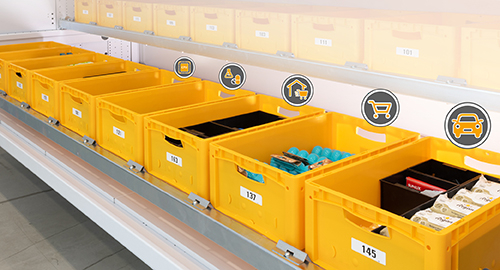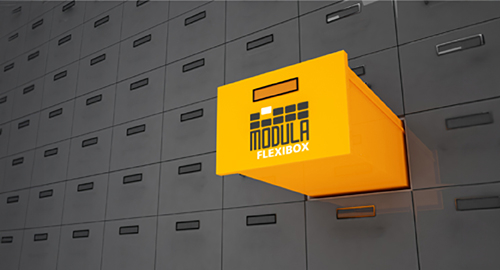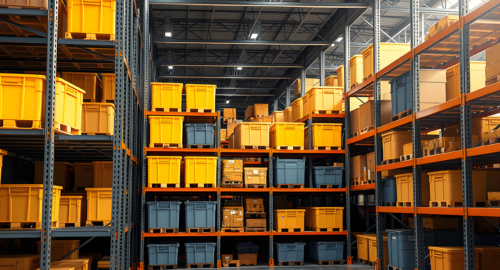An effective and efficient supply chain requires accurate planning ahead of time. Since this is a highly complex process involving many resources that must be organized, any change can result in criticalities affecting the performance of the entire distribution chain.
Global changes, such as the ones we experienced in recent times, certainly affect the management of a supply chain. This period, like others in the past, has changed the habits of end consumers and companies are required to adapt to the new demand quickly enough, in order not to lose the trust of customers as well as personnel and partners.
Faced with radical changes, how can companies not only survive but even drive change and create opportunities for improvement?
The critical factor for success is the company’s ability to move from an exclusively lean approach to an agile approach: redesigning the supply chain with new methods able to minimize risks while at the same time taking advantage of all the innovative resources that the logistics industry has been proposing in recent years.
Key concept: redesign the supply chain focusing on agility and resilience.
The agile approach: How to manage risk with greater speed and flexibility
Let’s start with the assumption that the company already has well-defined processes and that it is willing to re-configure them to meet the needs arising from problems detected in the field (internal factors) or from economic and/or social shocks (external factors).
One of the first steps to be taken is transparent communication with all the players in the chain, a fundamental prerequisite for the strategic planning of all production. Precisely because the supply chain is made up of different players, in order to face sudden changes, it is essential to communicate quickly with all of them to reprogram the processes in the shortest possible time. This is possible only if at the base there is clear sharing of information along the entire supply chain.
Second, the approach must shift from a classic approach characterized by maximum efficiency to a modern approach based on flexibility. This can be done by taking advantage of the pillars of Industry 4.0 such as the Internet of Things (IoT) and Big Data.
Thanks to the application of the Internet of Things, a company can easily trace products and processes in real-time all along the supply and distribution chain, as well as manage sale conditions depending on raw material prices. Connecting machines and industrial plants with the Internet of Things is a challenge that will completely change the entire production process in the medium term. A hypothetical fully automated company based on the IoT-approach (therefore equipped, for example, with transfer machines, intelligent robots, automatic vertical storage systems) and operating according to the logistic approach of a DIO (Direct Input/Output) system, will be able to manage all critical areas in real time: offices, production areas, automatic storage systems and public areas.
In such a scenario vertical storage technologies are paramount: they are in fact able to efficiently manage warehouse handling and logistics by means of software applications. All this leads to a significant improvement in the supply chain if all the partners and suppliers who are part of it are involved in an organic and integrated way.
Big Data, on the other hand, helps to identify, locate and intercept increasing or decreasing trends in demand. Only the interconnection and sharing of data facilitates access to information and resources for the benefit of the entire business ecosystem, contrary to the principle of possessing information as a source of power.
A return to proactive inventory for resilient logistics
The efficient management of inventory and the supply of goods helps to reduce costs, improve customer satisfaction and increase productivity of any industrial business.
The really important thing is to transform the information obtained into a rapid and effective response aimed at improving intralogistics. Making reliable forecasts is difficult even for the best managed companies. The concrete alternative is to allocate a minimum of stock in order to cope with forecast uncertainty even in the event of a sudden interruption of critical supplies.
What are the steps to design a resilient supply chain?
- Understand and analyze the company’s intralogistics
- Map processes with suppliers and customers
- Identify risks
- Manage risk
- Take an agile and not just a lean approach
- Automate
What to do concretely to change approach?
First of all, shift from a conflictual relationship to a collaborative relationship with customers and suppliers. Visibility and transparency are critical: never lie about the availability of a given product or confirm shipments that can never actually be delivered in time just to prevent the customer from changing supplier.
Above all, it is important to adopt 4.0 automation systems capable of protecting the people who work for us and buy from us, as well as the environment in which we live and work.
Automation plays and will increasingly play a strategic role in emergency situations but also in the management of everyday tasks.
For example, in the case of automatic vertical storage systems, the operator can stay in a fixed position and pick the requested items with no need to move or interact with other colleagues. Social distancing is guaranteed since the minimum width of a tray is 1.3 meters.
The advantages of automation: automatic vertical storage systems
It is no coincidence that automation has kept growing over the last 10 years. Specifically, thanks to automation, in warehouses we have shifted from the “person to goods” to the “goods to person” approach, which offers significant advantages. There are many automated solutions available for automatic storage and picking, but vertical storage systems certainly outpace other solutions with their remarkable flexibility.
Their most obvious advantages are:
- Higher productivity and efficiency
- Fewer picking errors
- Lower production costs
By integrating picking assistance systems in automatic storage solutions, operators are guided in the selection of the items to pick, considerably reducing the margin of error and order preparation times. The double bay also improves efficiency: while one tray is in the bay for a picking operation, the lift prepares the next tray for the successive one. This ensures an increase in productivity and ever greater efficiency within the warehouse.
Automated picking, the perfect ally for agile logistics
Transparency and communication must help supply chain managers to optimize all logistics processes, especially warehouse management and all related activities.
Picking, in particular, is the heart of the warehouse and for this reason is one of the priorities when it comes to optimizing warehouse activities. In fact, picking is the process during which individual items are collected from shelves, pallets or more simply from material storage areas.
Anthropomorphic robots, autonomous mobile robots and cobots: all these systems are able to improve and automate the picking phase. However, the greatest advantages are obtained when they are installed in combination, for example with an automatic vertical storage system, because they make the picking and placing process very agile.
Automatic picking technology operates at speeds and efficiency rates that manual picking can never match. While it is true that there are ways to improve manual picking, automatic systems are more efficient, especially in situations with many different items where it is necessary to operate quickly and without mistakes (especially when orders are concentrated in specific time frames).
8 types of waste that Vertical Lift Modules can eliminate



